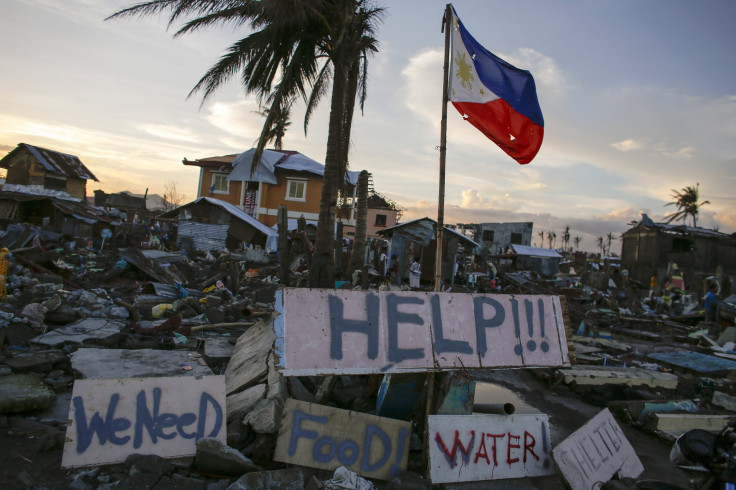After Typhoon Haiyan, Philippines Economy Grows At Slowest Pace In Over A Year

With the enormous destruction caused by Super Typhoon Haiyan further hindering its outlook for expansion, the Philippines experienced its weakest economic growth in more than a year last quarter, Bloomberg reports.
The National Statistical Coordination Board said in Manila today that gross domestic product climbed 7 percent in the three months through September from a year earlier, compared with a 7.6 percent gain in the previous quarter.
An economic resurgence led by President Benigno Aquino has earned the Philippines its first investment-grade scores from Moody’s Investors Service, Fitch Ratings and Standard & Poor’s, according to Bloomberg. However, exports slowed as global demand faltered, and growth will be hampered even more considering the destruction Haiyan caused to roads, towns, farms, not to mention a whole city in the Visayas islands. The catastrophic typhoon left at least 5,500 people dead and displaced 3.5 million.
“Growth will taper in the next few quarters before reconstruction will bring it back,” Jeff Ng, a Singapore-based economist at Standard Chartered Plc. “Stronger investment and exports are needed to sustain growth.”
The Philippine Stock Exchange Index has fallen about 5 percent since Typhoon Haiyan, also known as Typhoon Yolanda, arrived Nov. 8. This month, the index is the worst performer in the Asia-Pacific. The peso has dropped more than 1 percent in the same period. Damage to residential, agricultural and commercial properties from Haiyan is estimated at between $6.5 billion and $14.5 billion, AIR Worldwide said earlier in November.
Goldman Sachs Group Inc. said in a note last week that the typhoon will impact economic activity until early 2014, prior to recovery-related investment boosts growth, according to Bloomberg.
On Nov. 12, Finance Secretary Cesar Purisima said the local economies in areas affected in central Philippines, which account for about 12.5 percent of GDP, may contract 8 percent to 10 percent in 2014. The central bank has held its benchmark interest rate at a record-low 3.5 percent since October 2012, and cut the rate on its special deposit accounts three times this year.
Initial indications are that there isn't a need to adjust the monetary-policy stance, but Bangko Sentral ng Pilipinas has space to respond, Governor Amando Tetangco said last week following his announcement that there would be higher inflation forecasts for this year and 2014, Bloomberg reports.
Economic Planning Secretary Arsenio Balisacan said on Nov. 14 that the Philippines economy may expand between 4.1 percent and 5.9 percent this quarter. Full-year growth will probably be 6.5 percent to 7 percent, within the government’s targeted range, Balisacan added, according to the news site.
This year, Aquino was named by Time as one of the world’s 100 most influential people. The president is planning to increase the budget to a record in 2014 and boost spending on roads, ports and classrooms. San Miguel Corp., Ayala Corp. and Megawide Construction Corp. are investing in projects such as airports and railways.
© Copyright IBTimes 2024. All rights reserved.





















